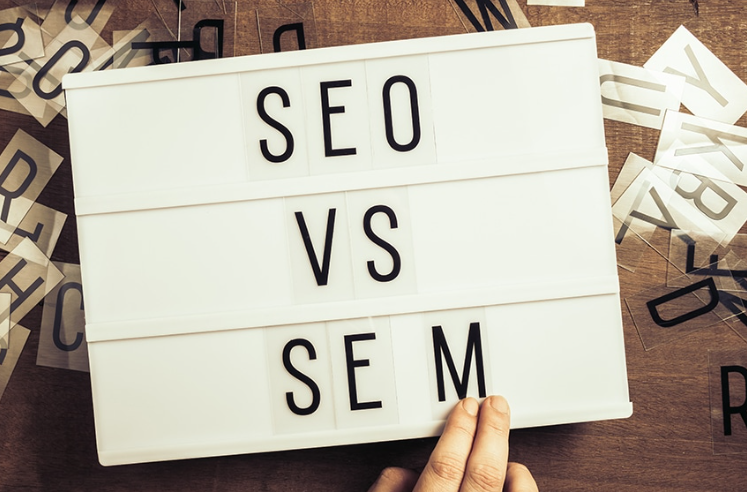In the world of digital marketing, two key strategies stand out for increasing online visibility and driving traffic to websites: Search Engine Optimization (SEO) and Search Engine Marketing (SEM). While they share the common goal of improving a website’s search engine presence, they employ different techniques and approaches. In this article, we’ll explore the differences between SEO and SEM and help you choose the right strategy for your business.

What is SEO?
Search Engine Optimization (SEO) involves optimizing your website and its content to rank higher in organic (non-paid) search engine results. SEO focuses on improving factors such as website structure, content quality, and relevance to make it more appealing to search engine algorithms.
How Does SEO Work?
SEO works by targeting specific keywords and phrases that users are likely to search for. By optimizing website elements such as titles, meta descriptions, headings, and content, SEO aims to improve a website’s visibility in search engine results pages (SERPs). Additionally, building high-quality backlinks from other websites can enhance a site’s authority and credibility in the eyes of search engines.
What is SEM?
Search Engine Marketing (SEM), also known as Pay-Per-Click (PPC) advertising, involves placing ads on search engines such as Google or Bing to drive traffic to your website. Unlike SEO, SEM involves paying for ad placements based on selected keywords and bidding on ad space in search engine results.
How Does SEM Work?
SEM works by creating targeted ads that appear at the top of search engine results pages when users search for specific keywords. Advertisers bid on keywords relevant to their business, and the search engine determines ad placement based on factors such as bid amount, ad relevance, and ad quality. SEM campaigns can be highly targeted, allowing advertisers to reach users based on demographics, interests, and search behaviour.
Key Differences Between SEO and SEM
Cost
SEO is generally considered a long-term investment, as it takes time to see results and does not involve direct advertising costs. In contrast, SEM requires a budget for ad spend, and costs can vary based on keyword competitiveness and bidding strategy.
Visibility
SEO focuses on improving organic search rankings, which can lead to sustained visibility and traffic over time. SEM provides immediate visibility through paid ads but relies on ongoing ad spending to maintain visibility.
Click-through Rates
While both SEO and SEM can drive traffic to a website, studies have shown that organic search results (SEO) tend to have higher click-through rates than paid search ads (SEM).
Choosing the Right Strategy
When deciding between SEO and SEM, consider factors such as your business goals, budget, and timeline. If you’re looking for long-term, sustainable growth and have the time to invest in optimizing your website, SEO may be the right choice. On the other hand, if you need immediate results or want to target specific keywords with paid advertising, SEM can provide a more direct approach.
Conclusion
SEO and SEM are both valuable strategies for improving online visibility and driving traffic to your website. By understanding the differences between the two and considering your business objectives, budget, and timeline, you can choose the right strategy to achieve your marketing goals. Whether you opt for SEO, SEM, or a combination of both, investing in search engine marketing can help you reach your target audience and grow your online presence effectively.

